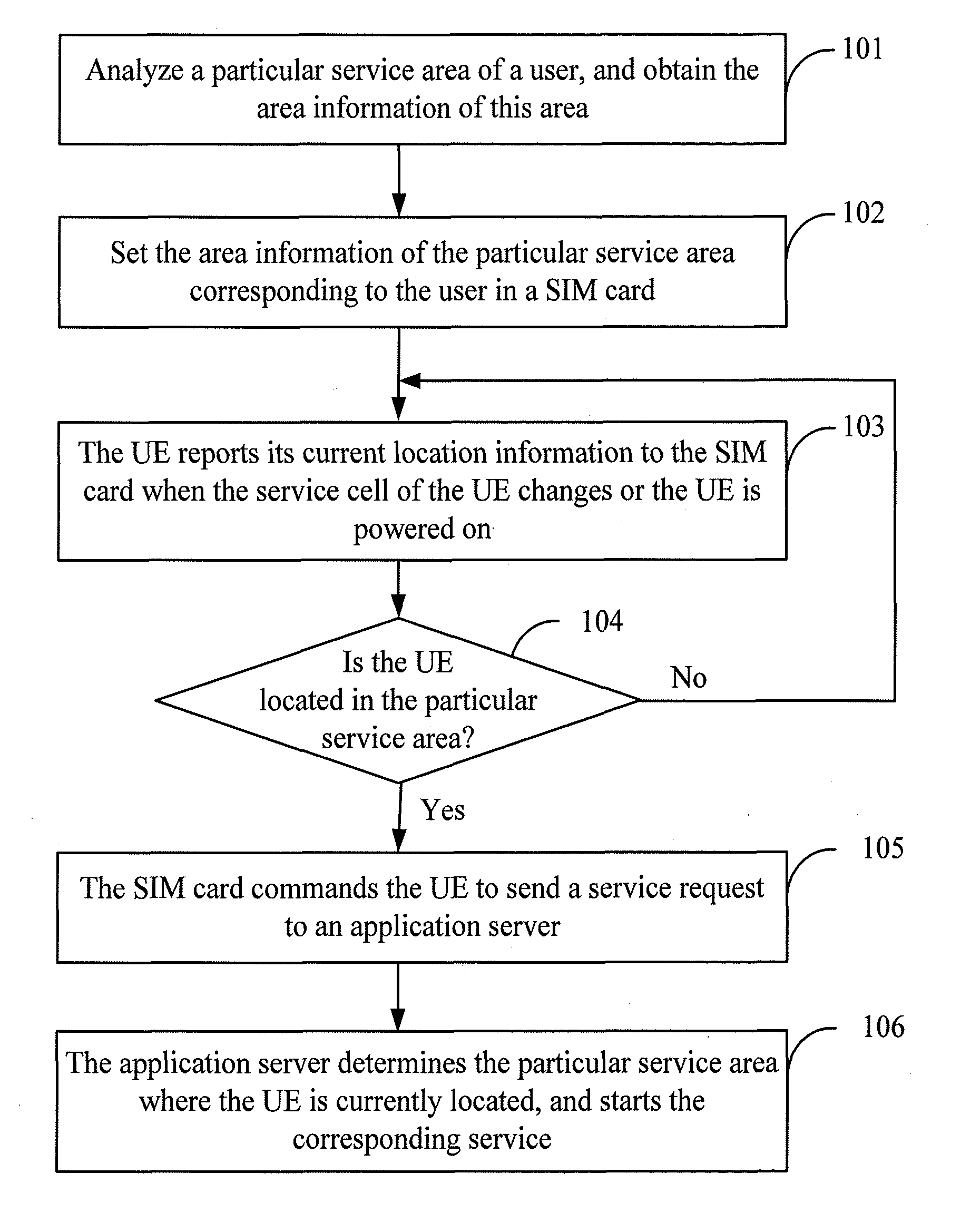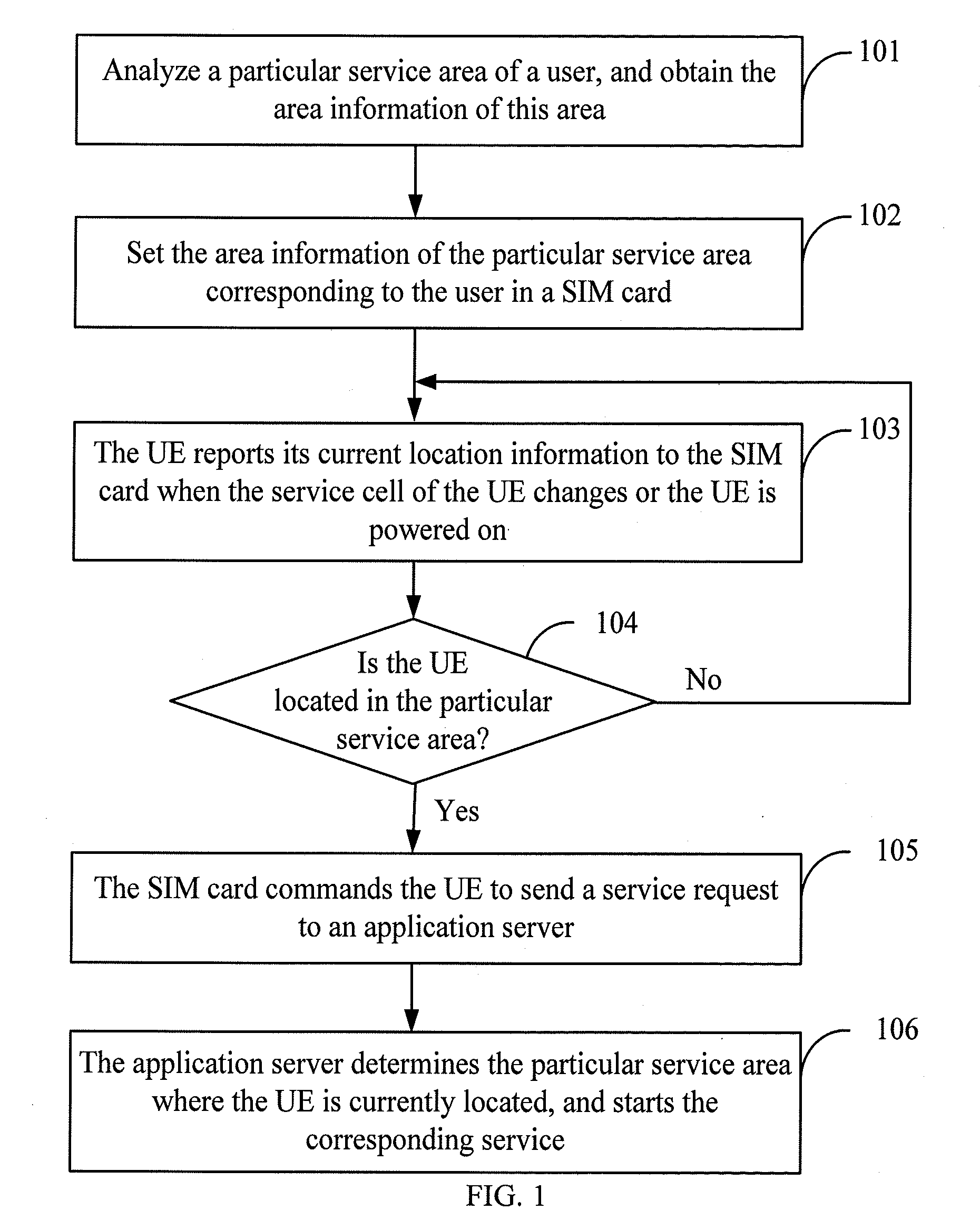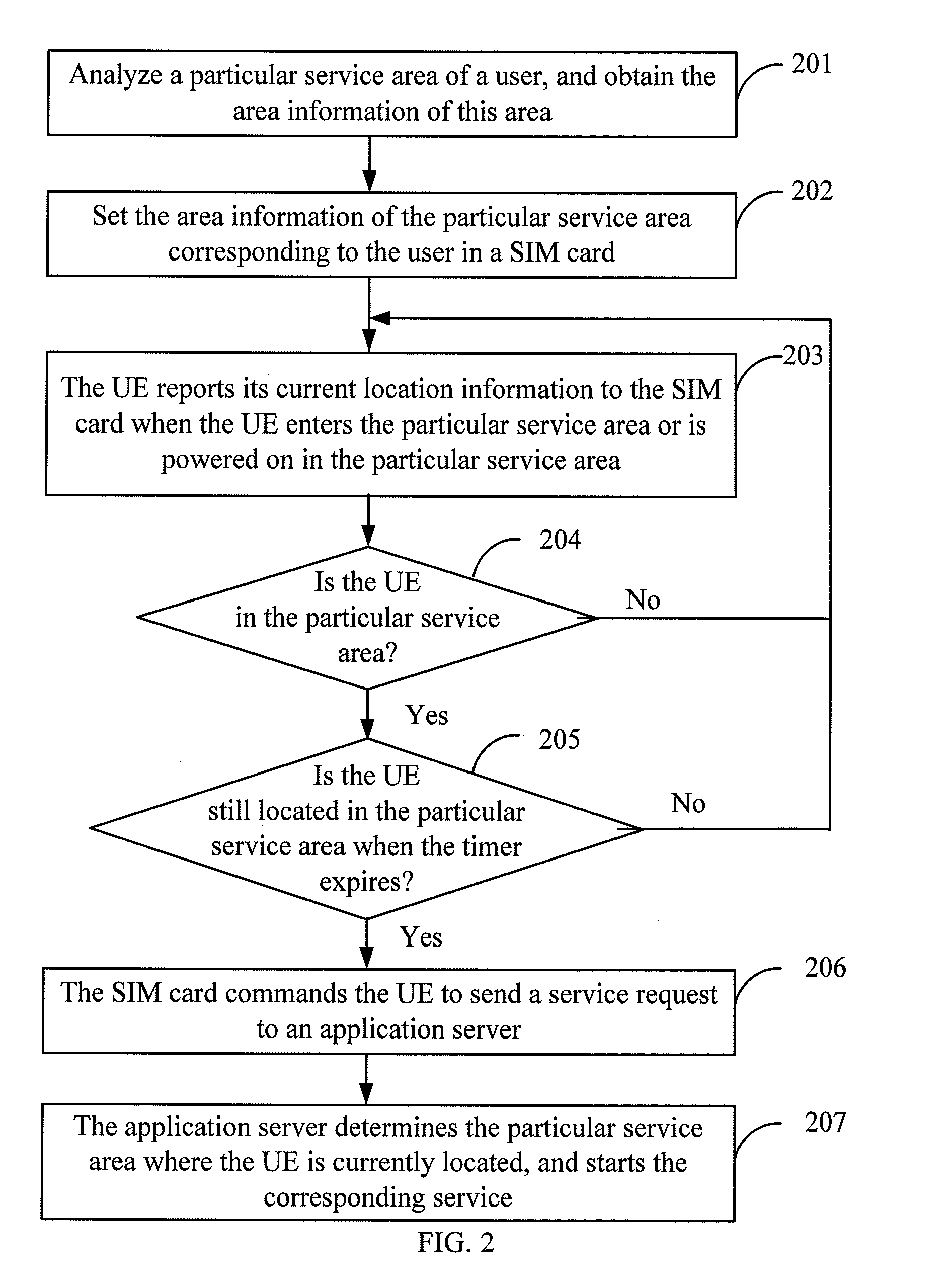Method, device and system for implementing location-based service
a technology of location and service, applied in the field of communication technology, can solve the problems of no good solution for lbs, no good solution available, etc., and achieve the effect of avoiding the spread of junk information and improving user satisfaction
- Summary
- Abstract
- Description
- Claims
- Application Information
AI Technical Summary
Benefits of technology
Problems solved by technology
Method used
Image
Examples
first embodiment
[0026]FIG. 1 illustrates a flowchart of a method for implementing the LBS provided by the first embodiment of the present disclosure. As illustrated in FIG. 1, the method of the first embodiment includes the following steps:
[0027]Step 101: Analyze the particular service area of the user and obtain the area information of this area.
[0028]In the embodiment, the areas where services need to be provided for the particular user should be analyzed first. The specific way may be: analyzing the particular service area of the user and obtaining the area information of this area.
[0029]The specific way above may be completed by the operators during the early stage of network construction or the network operation according to the actual requirements. The specific way may be: analyzing a cell covering the particular service area of the particular user and obtaining a Cell ID (if the particular service area is covered by a cell) or a Cell Group ID (if the particular service area is covered by mul...
second embodiment
[0056]FIG. 2 illustrates a flowchart of a method for implementing the LBS provided by the second embodiment of the present disclosure. As illustrated in FIG. 2, steps 201 to 204 are substantially the same as steps 101 to 104 in the first embodiment, and steps 206 to 207 are substantially the same as steps 105 to 106 in the first embodiment. This embodiment differs from the first embodiment in that: in step 204, when determining that the user enters the particular service area, the SIM card does not immediately trigger the UE to send a service request to the application server, but executes step 205 of setting a first timer for determination. If the timer expires, and the UE remains located in the particular service area, the SIM card commands the UE to send the service request to the application server. The duration of the timer may be flexibly set according to the operation requirement, for example, to two minutes. Before the timer expires, if the service cell of the UE does not ch...
third embodiment
[0062]The technical solution of the embodiment may be based on the first or second embodiment. In comparison with the first or second embodiment, the differences of the embodiment are as follows.
[0063]When commanding the UE to report a service request (step 105 in the first embodiment, and step 206 in the second embodiment), the SIM card may set a second timer to determine whether the UE has stayed in the particular service area for a sufficient time. It may be understood that, for the second embodiment, the second timer is independent of the first timer which is set when the SIM card determines that the user enters the particular service area. The duration of the second timer may be flexibly set according to the operation requirement. For example, the duration may be set to two minutes.
[0064]When the second timer expires, if the SIM card determines that the UE (corresponding user) has already stayed in the particular service area for a certain time (see the second embodiment for th...
PUM
 Login to View More
Login to View More Abstract
Description
Claims
Application Information
 Login to View More
Login to View More - R&D
- Intellectual Property
- Life Sciences
- Materials
- Tech Scout
- Unparalleled Data Quality
- Higher Quality Content
- 60% Fewer Hallucinations
Browse by: Latest US Patents, China's latest patents, Technical Efficacy Thesaurus, Application Domain, Technology Topic, Popular Technical Reports.
© 2025 PatSnap. All rights reserved.Legal|Privacy policy|Modern Slavery Act Transparency Statement|Sitemap|About US| Contact US: help@patsnap.com



